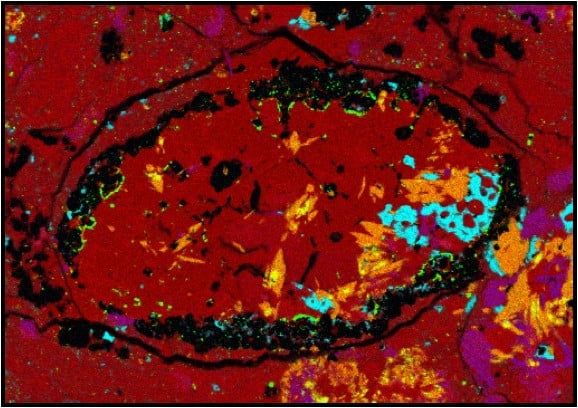Scientists studying a shard of meteorite have found evidence that it comes from a previously unknown asteroid that could be as large as the dwarf planet Ceres. The meteorite, Almahata Sitta (AhS), fell to Earth in 2008, and the researchers studied its composition to learn about the asteroid from which it came.
A meteorite is the name for a piece of debris that falls to Earth, and this particular one comes from an asteroid, which is a small object which orbits the sun. Asteroids are typically much smaller than planets and are most commonly clustered in the asteroid belt between Jupiter and Mars. Within this asteroid belt, the largest known object is a dwarf planet called Ceres.
Now, the new evidence suggests another asteroid as big as Ceres may exist somewhere else out in the solar system.
The researchers from the Southwest Research Institute (SwRI) looked at a tiny sample of meteorite AhS to learn about the body it came from. “We were allocated a 50-milligram sample of AhS to study,” Dr. Vicky Hamilton, first author of the paper, explained in a statement. “We mounted and polished the tiny shard and used an infrared microscope to examine its composition. Spectral analysis identified a range of hydrated minerals, in particular amphibole, which points to intermediate temperatures and pressures and a prolonged period of aqueous alteration on a parent asteroid at least 400, and up to 1,100, miles in diameter.”
This means that the asteroid the sample came from must have been large and that it formed in the presence of water. It’s rare to find the mineral amphibole in this kind of meteorite, called a carbonaceous chondrite (CC) meteorite, making AhS an unusual specimen and one which is particularly useful for learning about the early solar system.
We may well learn more about the early solar system from the study of two recently visited asteroids, Ryugu and Bennu. Ryugu was visited by Japan’s Hayabusa 2, which recently returned a sample to Earth, and Bennu has been visited by NASA’s OSIRIS-REx, which should return a sample in 2023.
These samples, which are collected from asteroids directly, may differ from those like AhS which have fallen to Earth and been affected by their journey through the atmosphere.
“If the compositions of the Hayabusa2 and OSIRIS-REx samples differ from what we have in our collections of meteorites, it could mean that their physical properties cause them to fail to survive the processes of ejection, transit and entry through Earth’s atmosphere, at least in their original geologic context,” said Hamilton. “However, we think that there are more carbonaceous chondrite materials in the solar system than are represented by our collections of meteorites.”













